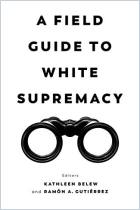
Book
Culture Warlords
My Journey into the Dark Web of White Supremacy
Recommendation
White supremacy radicalizes young people – especially white males – using extreme methods and ideologies that go well beyond politically conservative thought. By shining a light on far-right extremists and their violent ideas, author Talia Lavin hopes to impede these radical groups’ underground organizing. Lavin explains their beliefs and their networks, details the hate they manufacture and stoke, and describes the consequences of their activities for a multicultural, diverse society.
Summary
About the Author
Talia Lavin is a journalist who has worked at The New Yorker, the Huffington Post and Media Matters.
Learners who read this summary also read
Book
Book
Book
Book






















Comment on this summary or Diskussion beginnen